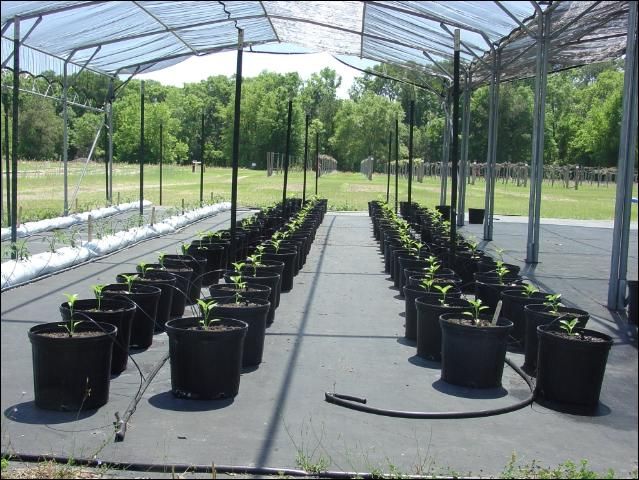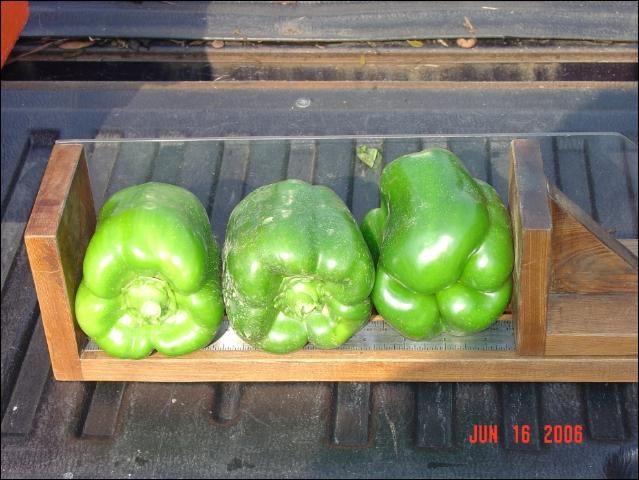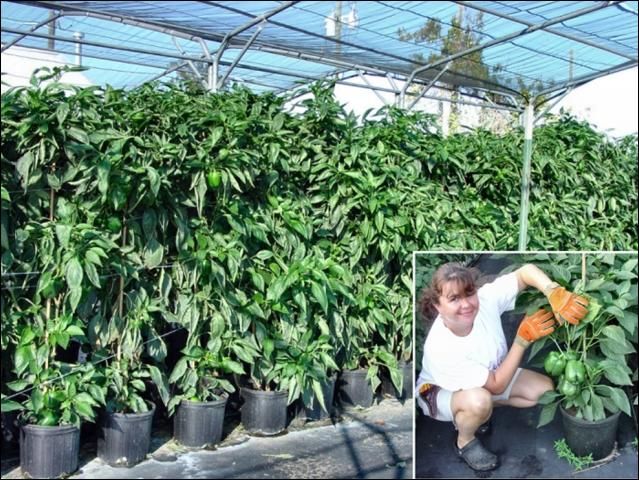Introduction
Florida produces nearly 20,000 acres of green bell peppers in the field each year, making green bell pepper a very valuable commodity, second only to tomato. Bell peppers are also grown in Florida for their mature colored fruit in protected greenhouse culture. Colored bell pepper is one of the top greenhouse vegetable crops grown in Florida along with cucumber and tomato. Field-grown Florida bell peppers are in the market nearly year round from October to July. Florida bell peppers are not available in large supply during the late summer and early fall (July–September) due to high temperature, high humidity and frequent rainfall during that time. The marketplace prefers that growers consistently supply high quality product for as long as possible. This entices large wholesale growers to produce in multiple locations to extend their season. Small, direct-market farmers also seek ways to extend the season; however, multiple locations are not generally practical. Therefore, small growers often find the adoption of season-extending cultural practices more viable. Small growers have traditionally utilized season extension practices such as transplants, multiple varieties, row covers, plastic mulch, low tunnels, high walk-in tunnels and greenhouses. Most of these practices lengthen the season into the cooler part of the year. Yet few practices are used to extend the season into the hottest part of the year.
Materials and Methods
Recent trials at the UF/IFAS North Florida Research and Educational Center—Suwannee Valley near Live Oak, Florida, have evaluated the open shade structures to extend the pepper harvest season throughout the summer and into fall.
The trials were conducted under an open 40x40 ft commercial shade structure (Atlas, Alapaha, Georgia). The structure was made from galvanized pipe and covered with a black 50% polypropylene shade cloth. The peak of the structure was 10 ft tall. Peppers were grown in 3-gallon plastic pots filled with a soilless media of 100% composted pine bark. Pots were arranged in two double rows with 5-foot spacing between the centers of the two double rows. Plants were spaced 18 inches apart in the row. The crop was established on April 1, 2006 using 6-week-old Heritage VR (Harris Seeds, Rochester, New York) pepper transplants, with one plant per pot resulting in a total of 76 pots. Heritage was selected because of its tolerance to tomato spotted wilt, an important thrips-vectored virus in North Florida, and because of its tall and vigorous growth habit. The crop was irrigated and fertilized using a hydroponic nutrient solution and low volume delivery system (Table 1). Water and nutrients were applied several times a day with the duration of each irrigation event set to leach slightly at the end of the event.

Credit: UF/IFAS
Plants were supported by placing a 5-ft-long bamboo pole in each pot and then tying the plants to the poles. Additionally, a metal fence post was driven into the ground down the middle of the double row every 10 feet. The bamboo poles were attached to the metal posts with horizontal polypropylene strings. As the plants grew taller, additional horizontal strings were added to support the weight of the branches.
Insect pests and diseases were managed using a weekly scouting program and treated as needed. Common insect pests were armyworms, corn earworms, aphids, stinkbugs, and silverleaf whitefly. Mature green fruit were harvested every 7–14 days from June 16 through Nov. 9, 2006. Fruit was graded into USDA grades of Fancy, US No. 1, US No. 2 or cull. Fruit in each grade was counted and weighed. In addition, each month a representative sub-sample of 15 Fancy grade fruit were measured for average fruit width as an indicator of fruit size changes during the season. The yield for the peppers grown under shade was converted to yield per acre by converting the total production area (square feet), including the row middles to an acre basis.

Credit: UF/IFAS
Results and Discussion
Production of bell peppers in an open shade structure resulted in mostly US Fancy fruit with 3,460 boxes (28-lb boxes) per acre in comparison to 477 boxes of US No. 1, 202 boxes of US No. 2, and 236 boxes of culls. The yield total for US Fancy and US No.1 fruit was 3,937 boxes per acre. This yield is higher than yields for most open field production systems, but the growing season in the shade trial was as much as four months longer. Large fruit was harvested throughout the season with an average fruit width of 3 inches or greater (Table 3). The largest fruit width was measured during the June and July harvests at 3.5–3.7 inches. Fruit width decreased slightly in August and September, but increased again in October and November after temperatures had cooled somewhat. This is also noticed in the average number of fruit per box in the Fancy category during the season. Most Fancy fruit harvested during the middle of the season just made the minimum size grade for Fancy and therefore had many more fruit per box than the Fancy fruit during June and July.
Based on this observational trial, it appears using an open shade structure to extend the bell pepper harvest season from June to frost (November) was successful.
An added benefit was that this system produced large, high-quality fruit for the entire season. Continued trialing of this system should lead to further increases in yield and quality.

Credit: UF/IFAS
Hydroponic fertilizer solution concentration used to grow shade house peppers in a composted pine bark media at Live Oak, Florida.